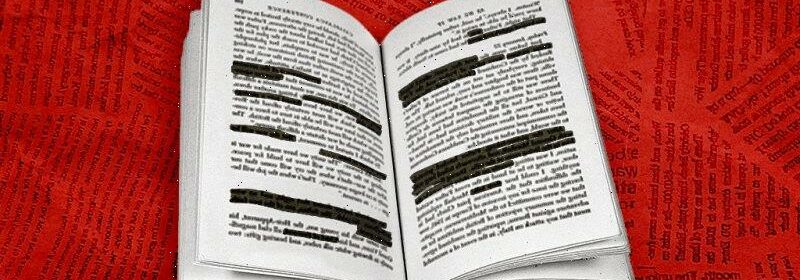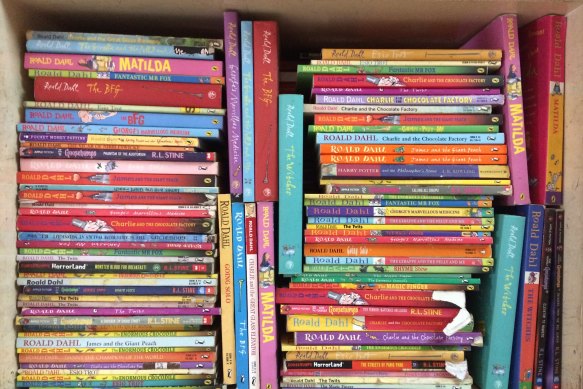‘Sensitivity readers’ changed Roald Dahl and James Bond. But who are they?

What do Roald Dahl and James Bond have in common? Both are the centre of a major debate raging in the literary world over the importance of language, when it should be changed and who should be changing it.
The controversies around the works of Dahl and Ian Fleming, the author of the James Bond novels, have highlighted the increasingly common role played by sensitivity readers: consultants who draw on their own lived experience and knowledge to provide advice to publishers and authors.
Sensitivity readers recently overhauled the language in Roald Dahl’s children’s books, from Matilda to Charlie and the Chocolate Factory.Credit:Wikimedia Commons
While there’s no hard and fast list, sensitivity readers might be enlisted for stories in which there are migrants or refugees, neurodiverse or differently abled characters. They might also have lived experience of being trans, queer, non-binary, autism/ADHD, anxiety, chronic illness, or homelessness, drug use or addiction. Few Australian publishers employ such people in-house, they are generally contracted on a case-by-case basis.
The role of sensitivity readers in classics such as Dahl’s children’s books and Ian Fleming’s Bond novels involve them assessing the text to ensure it meets with current social expectations. It’s out with “enormously fat”, witches as “hags” and other terms that haven’t aged well, and in with more acceptable, often toned down language. Racist and sexist language in Fleming’s books has been modified over the years, including while the author was alive. The debate has proven polarising, with some, including Salman Rushdie, arguing it’s revisionist censorship and others, like Australian author Andy Griffiths, saying it’s a regular part of the job.
Eva Mills, a publishing director at Allen & Unwin, says many of the best authors do a lot of this work themselves.
“If they were writing about a child who has grown up with domestic violence, good authors would go and do a whole lot of research before they write that character themselves,” she says. “So as a publisher we probably only use [a sensitivity reader] if a manuscript comes in and we have a little spidey-type feeling that something is not quite as authentic as it could be.”
“The ideal situation is that the author themselves has the lived experience with what they are writing about, so they can bring that authenticity to the work. These days we are a little bit wary about authors writing in the first person of an experience that is nothing like theirs.”
Expert readers are also regularly employed for cultural consultation, for example when insight into First Nations and other cultural backgrounds is required. “These days we try very hard to publish from within those cultures, we want a creator from that culture,” Mills says. “Occasionally, even a picture book might have Indigenous knowledge in it … then we will go to the relevant First Nations group and consult with them and there’s some kind of remuneration for that input.”
Used in this way, sensitivity readers are a way for the publishing industry to correct its historical lack of diversity.
“The publishing industry is very aware we need to diversify our workforces as well, so you have a wider range of people within the staff that can flag, ‘that doesn’t feel right to me’,” Mills says.
Like most sensitivity readers, Jinghua Xian, a writer and editor, does sensitivity reads only occasionally; there is not a great deal of demand in Australia. “People often talk about it as both authenticity and a particular lived experience and identity and you are reading for both character and scene, how that reads to someone with that experience. For me, [it’s] often non-binary or trans characters, or Chinese or Chinese diaspora, something that aligns with my experience in a particular way,” they say.
“Sometimes that is an experience an author shares, and they want an outsider’s opinion, and sometimes they want an intra-community eye on what they’re writing.”
Qian says there is a perception of sensitivity reads being a bigger part of the conversation about race and diversity and inclusion than it should be, whereas they say it is a very small part of that overall picture. “I don’t think it is a replacement for prioritising own voices writing, I don’t think it replaces broader conversations about who is able to write, who is able to edit, how power works in the industry. I see it as one ingredient … it’s one form of consultation.”
Qian sees it as an element of fact-checking. “If we had a more robust fact-checking industry in publishing and media that definitely overlaps, in some ways it is similar … it’s a level of risk mitigation.”
Mills points out that it’s a demanding task for sensitivity readers. “You’re asking them to put their imprimatur for their entire group. And every group is incredibly diverse. My lived experience as a 50-something white woman living in Melbourne will be very different to another’s,” she says. “Some people find that quite challenging and don’t necessarily want to speak for everybody.”
The Booklist is a weekly newsletter for book lovers from books editor Jason Steger. Get it delivered every Friday.
Most Viewed in Culture
From our partners
Source: Read Full Article
